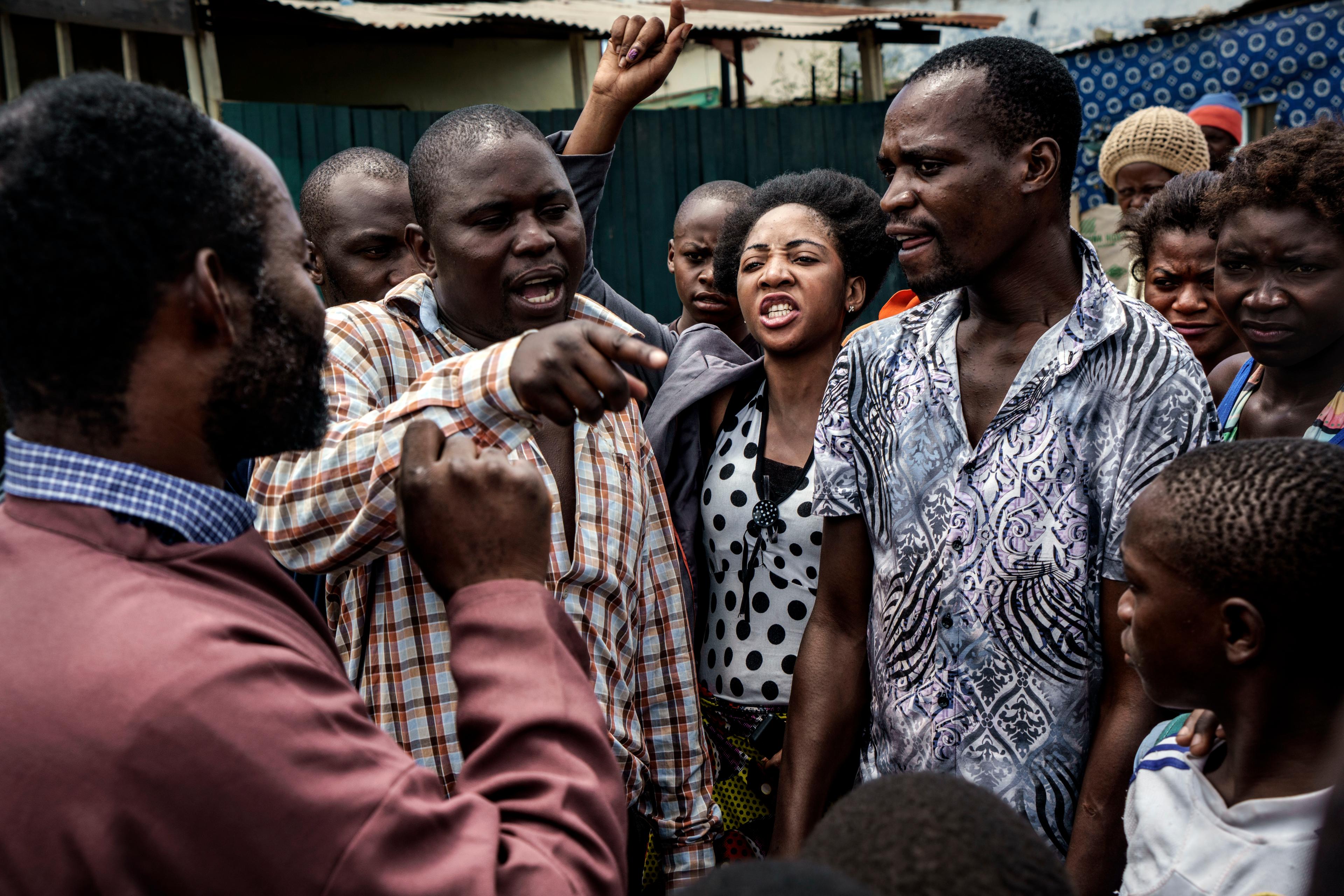In a scene from the movie Adaptation (2002), Nicolas Cage, playing the writer Charlie Kaufman, sits in front of his typewriter paralysed with writer’s block. Cage’s mouth doesn’t move but, as the viewer, you hear his voice speak:
To begin. To begin. How to start. I’m hungry, I should get coffee. Coffee would help me think but I should write something first, then reward myself with coffee. Coffee and a muffin. OK, so I need to establish the themes. Maybe banana nut, that’s a good muffin.
You’re hearing Charlie’s inner speech, or the running dialogue in his mind. Many films have this kind of voiceover: it isn’t narrating to the audience in an omniscient way, but opening a window into the character’s mind. It’s sharing what they are saying to themselves, which can include their feelings, plans or desires, like for a specific muffin variety.
When we hear these disembodied voices in films, most of us get it. That’s because the voiceover is similar to what takes place in our own minds each day. The US sociologist Norbert Wiley noted the parallels. In Inner Speech and the Dialogical Self (2016), he wrote: ‘Life is something of a silent movie, and inner speech makes it hang together.’
For psychologists and other researchers, inner speech presents a puzzle – it’s a huge part of our lives, yet so difficult to study. After all, in real life, when it comes to other people’s inner speech, there is no audio with closed captions.
Nevertheless, there have been attempts to make the internal external. In 2016, the anthropologist Andrew Irving walked up to people on the streets of New York and asked them to say out loud what they were saying to themselves in their minds. ‘One person might be debating what to have for lunch or silently singing the lyrics of a pop song, while others are reminiscing about their childhood, fretting about money or fantasising about a work colleague,’ he wrote.
Irving acknowledged that there was a gap between what he could record in the field and what was going on in someone’s mind. ‘We are obviously not hearing people’s thoughts in themselves but their verbal articulation in a public context,’ he wrote.
That’s why some experts are turning to the way that inner speech is depicted in films and literature to help unlock the mystery of why we talk to ourselves in our heads and what this talk is for.
In films, inner speech gives the viewer a privileged insight into a character’s mind. In Terrence Malick’s movie Badlands (1973), we hear what Sissy Spacek’s character is thinking when her lover kills another man. In the TV show Magnum PI (1980-88), we often hear what Tom Selleck’s character is thinking about while he does it, such as giving himself directions or motivating himself. Taxi Driver (1976), A Clockwork Orange (1971), Memento (2000), Fight Club (1999) – all these movies make inner speech into outer speech for the audience’s sake.
When a movie voiceover communicates something to the viewer in this way, it’s mimicking social speech, as if the movie’s creators are talking to you. This is in line with the leading theory about where our own inner speech comes from.
In the 1930s, the Russian psychologist Lev Vygotsky proposed that inner speech was an internalised version of how children heard their parents talk, and how their parents spoke to them. According to Vygotsky, even though inner speech happens privately in your head, it remains social because it’s copying this social speech experienced early in life. When children hear their parents talking to them and to each other, those conversations become internalised over time, first into private speech, or children talking out loud to themselves, and then into inner speech.
We can be motivating or critical, we can calm ourselves down or get riled up
Vygotsky’s theory has found support in contemporary research. For instance, Elaine Reese at the University of Otago in New Zealand has shown that how children talk about the past and future with their parents can influence how coherent or robust their internal narratives about themselves are. Another study from 2020 found that when people are brought up with parents who disagree on how to raise them, they can have more confronting and ruminative internal dialogues as adults.
The way that inner speech mimics social speech helps to explain why it doesn’t just ‘do’ one thing, but many – just like external speech. To capture these different functions, in 2018, Charles Fernyhough, a psychologist at Durham University in the UK and author of The Voices Within (2016), helped to develop the Varieties of Inner Speech Questionnaire. Example items include: ‘I hear other people’s voices nagging me in my head’; ‘I talk silently in my head telling myself to do things’; ‘When angry, my inner speech can help calm me down.’
Sometimes, we talk to other people in our heads or we can talk to ourselves. We can be motivating or critical, we can calm ourselves down or get riled up. Just like a movie voiceover, your inner voice can both tell a story to you about yourself, remind you of something, motivate you, or criticise you.
What about the form and structure that inner speech takes? In films, the voiceover of characters’ thoughts is for the viewer, and focused on exposition, so it’s often presented in complete sentences. Real-life inner speech can be like this, but often it isn’t. ‘Many people say that inner speech is much more fragmentary, more disjointed than the polished monologues you tend to hear on TV,’ says Mathijs Geurts, a philosopher at the University of Salzburg in Austria, who studies inner speech.
Our inner speech is condensed, which wouldn’t work too well if it were vocalised in movies
Fernyhough thinks that a characteristic of real-life internal monologues is that they can be condensed down or expanded to different levels of abstraction. In 2004, he elaborated on Vygotsky’s theory by proposing that there are four levels that speech goes through on its way to being fully internalised: external dialogue (such as children’s conversations with their parents); private speech (when children talk out loud to themselves); expanded inner speech (inner speech that closely copies external dialogue, in full sentences and in a similar format); and, finally, condensed inner speech, or inner speech that is disjointed, a mix of words and ideas, and what Vygotksy called ‘thinking in pure meanings’.
A lot of the time, our inner speech is of the condensed variety – which wouldn’t work too well if it were vocalised in movies. Though the inner speech researcher Russell Hurlburt found that people frequently report talking to themselves in full sentences, Fernyhough says: ‘If you could hear my inner speech, you wouldn’t make any sense of it.’
The fragmentary nature of some inner speech was captured by Irving’s New York recordings. In one, a man lets out a sigh and says a series of disjointed phrases: ‘I am certain that this is an out. Pause. I can learn. Pause. Yet. Pause. I’m looking at this positively now, I was pissed before I felt like you two are a family now.’
In a paper published in 2022, Fernyhough and his Durham colleague Marco Bernini argued that looking at literature could help inform the scientific study of inner speech’s fragmentary nature. Unlike movie depictions of inner speech, novelists sometimes convey their character’s internal monologues in a way that is closer in form to how we often experience it in our heads.
Bernini and Fernyhough turned to modernist literature, such as James Joyce’s Ulysses (1920). Take this excerpt from the novel, where Bernini and Fernyhough have emboldened the parts that they considered inner speech – where the narrator is talking to himself in his mind (some of the non-emboldened words are also thoughts, but they aren’t articulated into speech):
His right hand once more more slowly went over his brow and hair. Then he put on his hat again, relieved: and read again: choice blend, made of the finest Ceylon brands. The far east. Lovely spot it must be: the garden of the world, big lazy leaves to float about on, cactuses, flowery meads, snaky lianas they call them. Wonder is it like that.
As Irving demonstrated, it’s difficult to study real-life inner speech, and capture what it’s like for people to think full and incomplete sentences as they expand and contract them in their minds like thought accordions. Through fiction, Bernini and Fernyhough say we can get an account of inner speech that’s close to lived experience, in some cases closer because writers are experts at introspection, and conveying inner lives.
Authors like Joyce and Woolf are experts in capturing inner speech in all its disjointedness
Further insights can come from comparing the different approaches novelists have taken to capturing inner speech. In particular, how they present inner monologues at different levels of expansion or contraction. Bernini and Fernyhough also discuss Virginia Woolf, who attempted to mimic inner speech and mind wandering in her novel Mrs Dalloway (1925). She wrote in her diary that Joyce took his condensing of inner speech too far: ‘The book is diffuse,’ she wrote of Ulysses. ‘It is brackish. It is pretentious.’ Woolf preferred to showcase inner speech like this:
… Peter Walsh said, ‘Musing among the vegetables?’ – was that it? – ‘I prefer men to cauliflowers’ – was that it? He must have said it at breakfast one morning when she had gone out on to the terrace – Peter Walsh. He would be back from India one of these days, June or July, she forgot which, for his letters were awfully dull; it was his sayings one remembered; his eyes, his pocketknife, his smile, his grumpiness and, when millions of things had utterly vanished – how strange it was! – a few sayings like this about cabbages.
When it came to representing the mind, and its interior monologues, Woolf believed that what Joyce was serving was too close to the raw form of thoughts. ‘When one can have cooked flesh,’ she wrote, ‘why have the raw?’
Bernini and Fernyhough say that authors like Joyce and Woolf, though different in style, are experts in capturing the phenomenology of inner speech in all its disjointedness, while still expanding it out enough so that we can read it as a story. The experience of reading Joyce’s writing is similar to our own sense of inner speech, they argued, and can lead to ‘a more nuanced and phenomenologically accurate conceptualisation of the mystery of the conscious.’
In his book In the Theater of Consciousness (1997), the neuroscientist Bernard Baars wrote that humans are ‘a gabby species. The urge to talk to ourselves is remarkably compelling, as we can easily see by trying to stop the inner voice as long as possible.’ But how necessary this inner chatter is is still a matter of debate.
There is a small minority of individuals who claim not to have an internal monologue, and others who have lost theirs through a brain injury. Peter Langland-Hassan, a philosopher at the University of Cincinnati in the US, thinks that for inner speech to be considered necessary or critical for cognitive processes such as memory, emotion regulation or creating a sense of ourselves, the burden is on the research to show that these people without inner speech are profoundly affected.
Inner speech could simply be a very effective way to describe your own mind to yourself
People with aphasia (a difficulty understanding or producing language due to brain injury or disease) will often struggle with a silent rhyming task, which involves deciding whether two words rhyme or not based purely on saying the words in their minds. This is taken by some researchers to indicate an impairment in inner speech – and to show how this impairment can have an impact on mental processing. However, the findings don’t show that inner speech is vital for performing these kinds of mental tasks – the same people with aphasia are able to make rhyming judgments when they can use overt language. Other research has shown that people with anendophasia – who report having no inner monologue – also don’t do silent rhyming tests as well as typical people, but they too are unaffected when they’re able to use overt speech – again raising questions about how vital inner speech is for cognition.
There is anecdotal evidence suggesting that the loss of inner speech can have profound consequences, though. For example, in her book My Stroke of Insight (2006), the neuroscientist Jill Bolte Taylor wrote about losing her inner speech after a stroke, and how this led to problems knowing where her body was in space, as well as memory issues and trouble recognising emotions. Even her sense of individuality was changed.
Many movies don’t have voiceovers or narration; some novels bring you inside a person’s mind, and others don’t. Yet they can all still tell a story, complex and psychologically rich. Perhaps it’s a similar situation with real-life inner speech. We don’t necessarily need it to think. But if inner speech is using a tool – language – that we use with others socially, inside our own minds, it could be simply a very effective way to describe your own mind to yourself.
‘Without it … it’s not like you can’t do a lot of complicated reasoning,’ Langland-Hassan says. ‘But when it comes time to reflect on your thoughts, it’s a really useful way of describing them.’
A movie voiceover or book narrator is there to make sense of events and carry the plot along. It can be expanded or contracted, just like how social speech behaves when it makes its way into our heads. Fernyhough thinks that inner speech can have the same function. He uses the analogy of a necklace. ‘Consciousness is full of memories, images, feelings,’ he says. ‘Maybe what inner speech does is it’s kind of the thread of the necklace that holds all these things together.’








